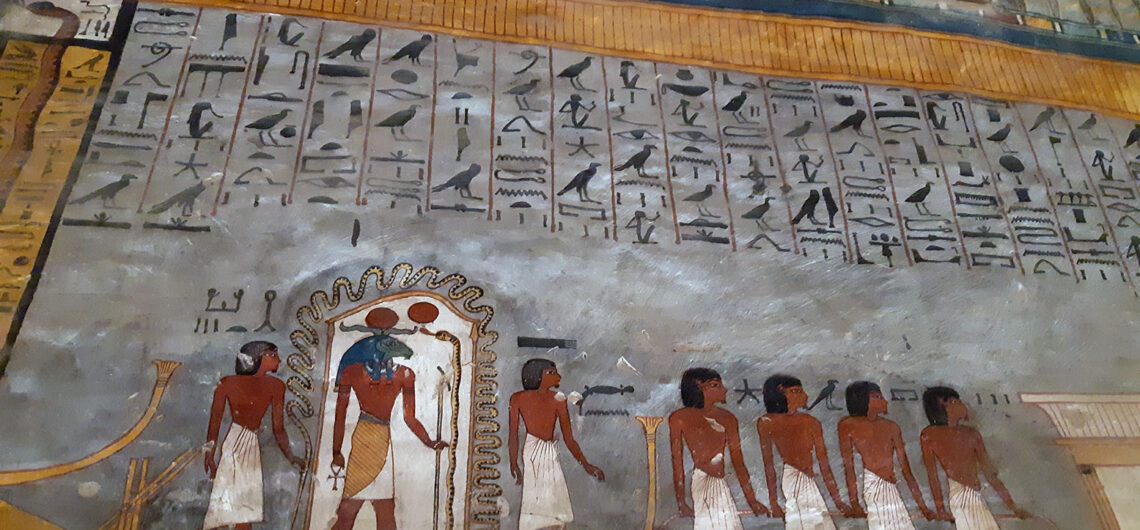Tomb of King Ramesses I | KV16 in Valley of the Kings, Luxor, Egypt – Egyptian Tombs
Facts about the ancient Egyptian civilization and the history of building Egyptian Pharaonic tombs from the 19th Dynasty and more Tomb design, visiting hours, entrance ticket prices…
It goes back to the founder of the Nineteenth Dynasty of Egypt of The New Kingdom of Egypt, King Ramses I, the most famous of the Egyptian Pharaohs kings, was a Military of ancient Egypt and ruled Egypt for only two years before he died and received the official royal Coronation of the Pharaohs.
His tomb is known as Tomb No. 16, and its international name is Learn more information about the history of the Pharaonic civilization “Ancient Egypt History“.
Tomb of King Ramesses I Facts
The tomb of Ramesses I was discovered by Giovanni Belzoni in 1817 AD..
The tomb is 29 metres long, which is rather small compared to other tombs in the Valley of the Kings, indicating the development of Architecture in ancient Egypt.
The tomb comes from two sloping stairs that connect the entrance to an inclined passage leading to the burial chamber..
The tomb of Ramses I came with a design similar to the Tomb of Horemheb | KV57, which was built during the reign of King Horemheb of the Eighteenth Dynasty of Egypt, especially for the entrance to the tomb, indicating the similarity of the art of Sculpture in Ancient Egypt.
The pharaonic Ancient Egyptian Coffins of the king was found made of granite (Ancient Egyptian Metallurgy) decorated with a set of drawings..
The drawings of the coffin depict Ramses I with a group of Egyptian deities – Ancient Egyptian gods and Goddesses and religious beliefs as in the Ancient Egyptian religion.
One of the scenes found inside the tomb is a scene from Book of Gates, which is a funerary book that explains part of the deceased’s journey to the afterlife, as in the legends of the pharaohs “Egyptian Mythology“.
The scene shows a mosque of King Ramses I kneeling before the gods..
When studying the tomb, it was noted that the construction process was somewhat hasty..
One of the clear signs of haste in the tomb is the drawing of Ramses I with the God Osiris and God Ptah, in addition to the God Anubis.
Description
The tomb of Ramses I consists of a square-shaped burial chamber for the pharaoh’s Mummy, and inside it is a sarcophagus made of granite..
The contents of the tomb are currently in The British Museum in London, England..
The mummy of Ramses I was also stolen by the Abdel Rasool Family, who sold it abroad through archaeologist and Egyptologists Dr. James Douglas in 1860 AD..
The mummy was placed in the Niagara Museum in Canada when it was stolen, but the identity of the mummy’s owner was not known for a long time..
The museum’s contents were then put up for sale to a Canadian businessman named William Jameson in 1999..
The businessman sold the mummy to a museum in America and the mummy remained in the museum for 4 years..
At that time, a series of studies were conducted by Egyptology on the mummy and its owner’s identity was identified..
In early 2003, the mummy was returned to Egypt again..
Inside the tomb, a manuscript was found bearing the name of the Book of Doors, and this manuscript conveyed to us the beliefs of the ancient Egyptians about the idea of resurrection and immortality..
The tomb remained closed for 12 years for restoration work and removal of any dust that distorted the accuracy of the drawings..
Note: Facts and secrets of the history will be added soon…
Hurghada Excursions Lovers, Best Travel Agency in Hurghada to provide daily tours to visit the Tourist attractions of Luxor by Hurghada to Luxor Tours and Hurghada to Pyramids Trips. Book online when you come to Hurghada, El Gouna, Sahl Hashish, Makadi Bay, Soma Bay, Egypt Tours Packages.

